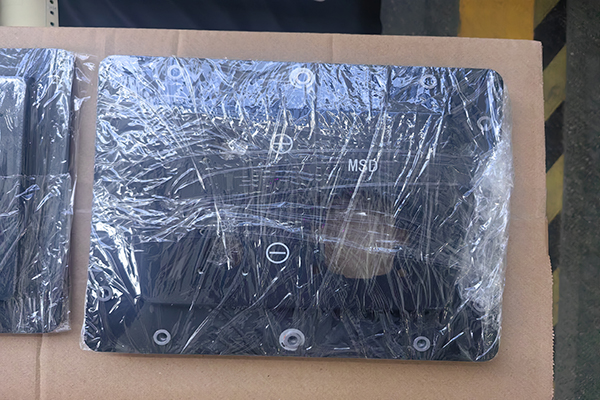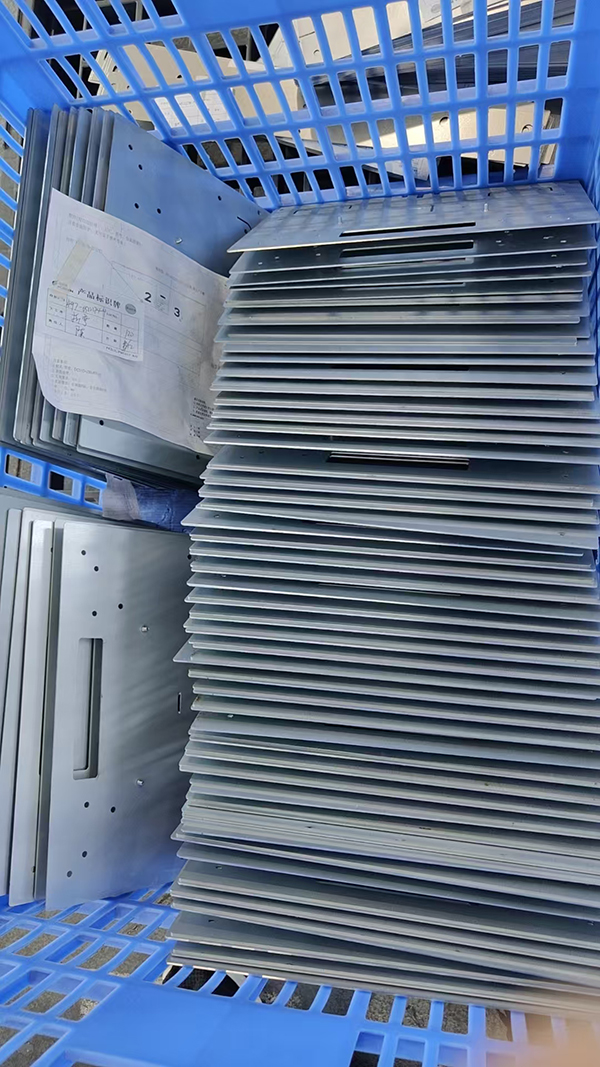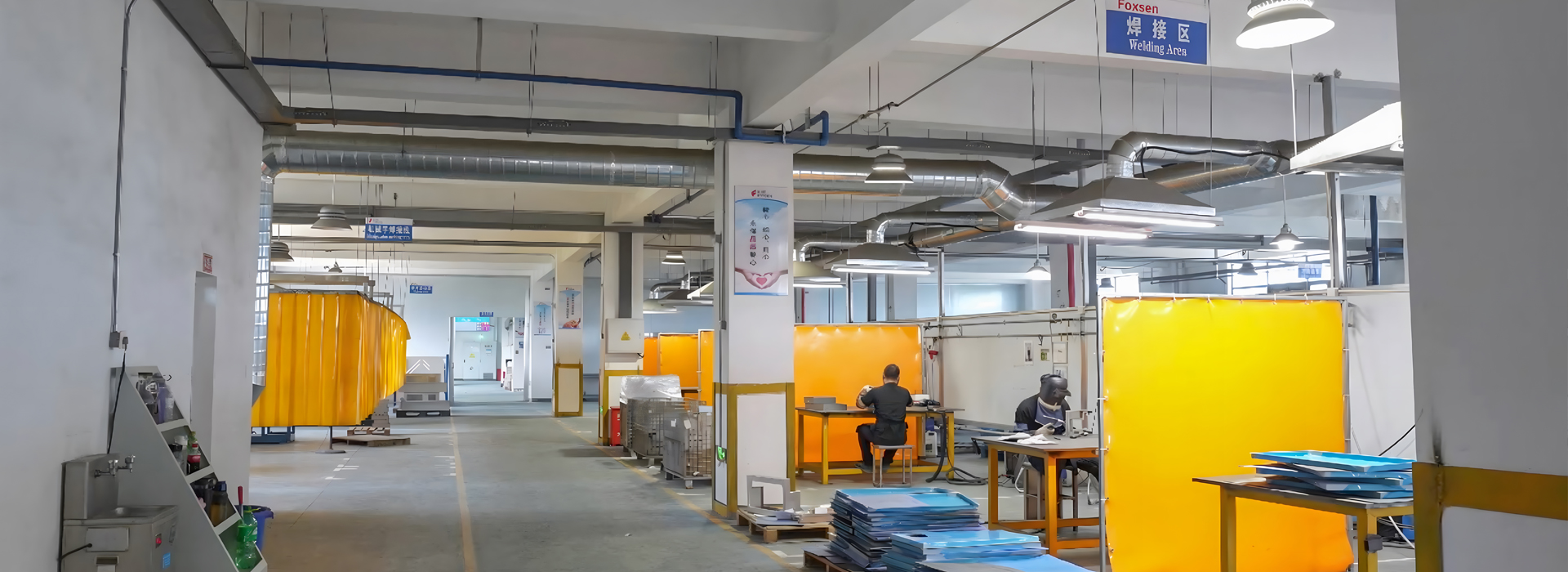
Energy storage systems rely on materials that balance strength, adaptability, and cost. The sheet metal energy storage enclosure excels in these areas, offering solutions that enhance safety and performance. You’ll find galvanized steel sheets, stainless steel, and aluminum used for enclosures and structural components. Each material serves specific needs—galvanized steel resists corrosion, while aluminum provides lightweight durability. Stainless steel works well in harsh conditions, ensuring long-term reliability. For battery enclosures, the sheet metal energy storage enclosure withstands forces up to 1000N with minimal deformation, maintaining structural integrity. Its thermal conductivity also protects batteries under extreme temperatures, making it essential for energy storage systems.
Key Takeaways
Sheet metal covers are strong and resist rust, keeping battery systems safe for a long time.
Materials like aluminum and coated steel help control heat, stopping batteries from getting too hot and making them work better.
Custom designs in sheet metal can be made to fit specific energy storage needs, making them easier to use and more effective.
Sheet metal can be recycled, which helps the environment by cutting down on waste and saving resources.
New methods like laser cutting and robot welding make parts more exact and cheaper to produce for energy storage systems.
Overview of Energy Storage Systems
Energy storage systems play a crucial role in modern technology, enabling efficient energy management and distribution. As you explore these systems, you'll find that battery energy storage systems are at the forefront, offering solutions for renewable energy integration and grid stability.
Key Components of Battery Energy Storage Systems
Battery energy storage systems consist of several key components that enhance their performance. These include the battery cells, management systems, and protective enclosures. Each component contributes to the overall efficiency and reliability of the system. For instance, optimized battery design significantly improves recycling performance, as shown by a strong positive relationship (γ11 = 0.68, p < 0.001). Additionally, the recycling process efficiency has a notable impact on overall performance (β21 = 0.72, p < 0.001).
Here's a table illustrating the role of individual battery components:
Material Requirements for Energy Storage Applications
Materials used in energy storage systems must meet specific performance criteria to ensure longevity and efficiency. Machine Learning (ML) algorithms have revolutionized predictive modeling for battery lifetime, offering more accurate predictions and extending calendar life by 40%–130%. This advancement highlights the importance of selecting materials that can withstand aging conditions.
Material Performance Insights:
ML models predict 40%–130% longer calendar life based on aging conditions.
Electron backscatter diffraction (EBSD) combined with ML provides insights into particle architectures.
The following table presents research data on material performance requirements:
Understanding these components and material requirements helps you appreciate the complexity and innovation involved in battery energy storage systems.
Role of Sheet Metal in Energy Storage Systems
Properties of Sheet Metal Relevant to Energy Storage
Sheet metal offers a unique combination of properties that make it indispensable in energy storage systems. Its high strength-to-weight ratio ensures durability without adding unnecessary bulk. This balance is critical when designing components like battery enclosures, where both strength and portability matter. You’ll also find that sheet metal resists corrosion, especially when materials like galvanized steel or aluminum are used. This resistance ensures long-term reliability, even in harsh environments.
Thermal conductivity is another key property. Sheet metal effectively dissipates heat, protecting sensitive battery components from overheating. This feature is particularly important in systems that operate under extreme temperatures. Additionally, sheet metal's malleability allows for precise shaping and customization. Manufacturers can create intricate designs that meet specific energy storage requirements without compromising structural integrity.
The recyclability of sheet metal further enhances its appeal. By using recyclable materials, you contribute to a more sustainable energy storage solution. This aligns with the growing demand for environmentally friendly technologies in the energy sector.
Sheet Metal Energy Storage Enclosure Design and Fabrication
Designing and fabricating a sheet metal energy storage enclosure requires careful planning and collaboration. During the design phase, engineers work closely with project managers to ensure manufacturability. This collaboration focuses on simplicity and efficient material use, which helps keep costs down while maintaining high performance.
Fabrication involves advanced techniques like laser cutting and robotic welding. These methods allow for precise cuts and strong, consistent welds, ensuring the enclosure meets strict quality standards. To optimize the design, manufacturers often follow principles of Design for Manufacturability (DFM). These principles include:
Reducing the number of fasteners and incorporating formed features to streamline production.
Limiting the variety of bend radii to minimize tooling complexity and costs.
Using rivets sparingly to reduce manual labor and potential quality issues.
When selecting materials, you should consider the appropriate sheet metal thickness to balance strength and weight. Structural features like ribbing and flanges can enhance the enclosure's strength without adding extra material. Planning for manufacturing processes also helps avoid complex shapes that increase production costs.
By focusing on these design and fabrication strategies, you can create a sheet metal energy storage enclosure that is both cost-effective and highly functional. This approach ensures the enclosure meets the demands of modern energy storage systems, from durability to thermal management.
Applications of Sheet Metal in Battery Energy Storage

Battery Enclosures and Protective Housings
Sheet metal plays a vital role in creating durable and efficient battery enclosures. These enclosures protect sensitive components from environmental factors like moisture, dust, and temperature fluctuations. You’ll often see materials like steel or aluminum used for this purpose due to their strength and corrosion resistance. Manufacturers design these enclosures for various applications, including outdoor use, where weatherproofing is essential. For instance, companies like Acro Industries specialize in fabricating high-quality enclosures with features such as leak-tight weatherproofing and custom additions like drawers, handles, and latches. These designs meet stringent industry safety standards, ensuring the reliability of battery energy storage systems.
When selecting materials for battery enclosures, you should consider the specific requirements of your application. Aluminum offers lightweight durability, making it ideal for portable systems. Steel, on the other hand, provides enhanced strength for stationary setups. Both materials can be customized to include features that improve usability and accessibility. By choosing the right sheet metal and design, you can ensure your battery energy storage system remains safe and functional under various conditions.
Structural Components for System Stability
Sheet metal is essential for maintaining the stability of battery energy storage systems. Structural components made from materials like aluminum alloys or hot-dip galvanized steel provide the necessary support to keep systems secure. These components must endure harsh outdoor conditions without deforming or rusting. High processing accuracy and strong sealing are critical to their performance, ensuring that the system remains stable even in challenging environments.
You’ll find sheet metal used in solar energy systems, where stability is crucial for optimal performance. The material’s durability and resistance to environmental stress make it a reliable choice for structural applications. By incorporating sheet metal into your system, you can enhance its longevity and reduce the risk of failure. This approach not only improves the overall efficiency of your battery energy storage system but also minimizes maintenance costs over time.
Thermal Management and Heat Dissipation
Effective thermal management is crucial for the performance and safety of battery energy storage systems. Sheet metal excels in this area due to its excellent thermal conductivity. It helps dissipate heat generated by batteries, preventing overheating and ensuring consistent performance. This property is particularly important in high-capacity systems, where excessive heat can compromise safety and efficiency.
Designing sheet metal components for thermal management involves careful consideration of material properties and system requirements. Aluminum, for example, is a popular choice due to its lightweight nature and superior heat dissipation capabilities. By integrating sheet metal into your system’s design, you can create a more efficient and reliable energy storage solution. This not only protects the batteries but also extends their lifespan, reducing the need for frequent replacements.
In addition to its thermal properties, sheet metal offers flexibility in design. You can customize components to include features like ventilation slots or heat sinks, further enhancing their ability to manage heat. This adaptability makes sheet metal an indispensable material for modern battery energy storage systems.
Integration in Renewable Energy Storage Systems
Renewable energy sources like solar and wind have transformed the way you think about power generation. However, their intermittent nature creates challenges for consistent energy supply. This is where energy storage systems, particularly battery storage systems, play a critical role. Sheet metal has become an essential material in integrating these systems with renewable energy technologies.
Enhancing Durability in Harsh Environments
Renewable energy systems often operate in outdoor environments exposed to extreme weather conditions. Sheet metal provides the durability needed to protect battery storage systems from rain, snow, and high temperatures. For example, aluminum and galvanized steel resist corrosion, ensuring long-term reliability. You can rely on these materials to maintain the structural integrity of enclosures, even in remote or coastal areas where environmental stress is higher.
Supporting Large-Scale Renewable Projects
Large-scale renewable projects, such as solar farms and wind parks, require robust energy storage solutions. Sheet metal components offer the strength and scalability needed for these applications. Structural elements made from sheet metal stabilize battery storage systems, preventing damage from vibrations or shifting ground. This stability ensures that renewable energy systems operate efficiently, even under challenging conditions.
Improving Thermal Management for Renewable Energy Storage
Thermal management is critical in renewable energy storage systems. Batteries generate heat during charging and discharging cycles, which can reduce efficiency or cause safety concerns. Sheet metal, with its excellent thermal conductivity, helps dissipate this heat effectively. By incorporating features like heat sinks or ventilation slots into sheet metal designs, you can enhance the performance of your battery storage system. This ensures that renewable energy is stored and delivered safely and efficiently.
Customization for Renewable Energy Applications
Every renewable energy project has unique requirements. Sheet metal offers the flexibility to create custom enclosures and components tailored to specific needs. For instance, you can design enclosures with integrated cable management systems or modular configurations for easy expansion. This adaptability makes sheet metal an ideal choice for renewable energy storage systems, whether you’re working on a residential solar installation or a large wind farm.
Tip: When selecting sheet metal for renewable energy applications, consider factors like material type, thickness, and coating. These choices can significantly impact the performance and lifespan of your battery storage system.
Promoting Sustainability in Renewable Energy Systems
Sustainability is a core principle of renewable energy. Sheet metal aligns with this goal due to its recyclability. After its lifecycle, you can recycle sheet metal components, reducing waste and conserving resources. This makes it a sustainable choice for renewable energy storage systems, contributing to a greener future.
By integrating sheet metal into renewable energy storage systems, you can enhance durability, efficiency, and sustainability. Whether you’re designing a small-scale solar setup or a large wind energy project, sheet metal provides the versatility and reliability needed to support renewable energy technologies.
Advantages of Using Sheet Metal in Energy Storage Systems
Durability and Longevity in Harsh Environments
Sheet metal stands out for its ability to endure harsh conditions. When you use materials like galvanized steel or aluminum, you gain protection against corrosion and environmental stress. This durability ensures your energy storage unit remains functional even in extreme weather. For example, outdoor systems exposed to rain, snow, or high temperatures benefit from the robust nature of sheet metal fabrication.
The longevity of sheet metal reduces the need for frequent replacements. This saves you time and resources while maintaining system reliability. Its strength-to-weight ratio also prevents deformation under pressure, making it ideal for structural components. By choosing sheet metal, you ensure your energy storage unit performs efficiently over its lifespan.
Customization for Specific Energy Storage Needs
Sheet metal fabrication offers unmatched flexibility for tailoring designs to your energy storage requirements. You can create enclosures with unique features like modular configurations, integrated cable management, or ventilation slots. These customizations improve energy efficiency and usability.
Manufacturers like Foxsen specialize in precision sheet metal fabrication, allowing you to adapt designs for residential, commercial, or industrial applications. Whether you need lightweight aluminum for portable systems or reinforced steel for stationary setups, sheet metal provides the versatility to meet your needs. This adaptability ensures your energy storage unit aligns with your specific goals.
Cost-Effectiveness and Scalability
Sheet metal fabrication delivers cost-effective solutions for energy storage systems. Its recyclability reduces material waste, contributing to sustainability while lowering expenses. Advanced manufacturing techniques like laser cutting and robotic welding streamline production, keeping costs manageable without sacrificing quality.
Scalability is another advantage. You can easily expand your energy storage unit by integrating additional sheet metal components. This makes sheet metal ideal for growing renewable energy projects or adapting to increased energy demands. By leveraging its scalability, you enhance system efficiency while controlling costs.
Tip: When planning your energy storage system, consider sheet metal for its balance of affordability and performance.
Environmental Sustainability and Recyclability
Sustainability plays a critical role in modern energy storage systems, and sheet metal stands out as an environmentally friendly material. Its recyclability reduces waste and conserves natural resources, making it a key component in sustainable design. When you choose sheet metal for your energy storage systems, you actively contribute to a greener future.
Recycling sheet metal offers significant environmental benefits. For example, recycling aluminum saves up to 95% of the energy required to produce new aluminum. This energy efficiency reduces the carbon footprint of manufacturing processes. Additionally, recycling metals lowers greenhouse gas emissions, helping mitigate climate change. By keeping metals out of landfills, you also promote better waste management practices. The table below highlights these benefits:
Sheet metal’s durability further enhances its sustainability. Components made from materials like galvanized steel or aluminum last longer, reducing the need for frequent replacements. This longevity minimizes resource consumption and supports a circular economy. When the material reaches the end of its lifecycle, you can recycle it to create new products, closing the loop on waste.
By incorporating sheet metal into your energy storage systems, you align with global efforts to reduce environmental impact. Its recyclability, combined with energy savings and waste reduction, makes it an ideal choice for sustainable energy solutions. Every time you opt for sheet metal, you take a step toward a cleaner, more sustainable future.
Tip: Always check for certifications like ISO 14001 when sourcing sheet metal. These certifications ensure the material meets environmental management standards.
Future Trends in Sheet Metal for Energy Storage

Lightweight and High-Strength Alloy Innovations
Advancements in lightweight and high-strength alloys are transforming energy storage systems. Aluminum-scandium (Al-Sc) alloys have emerged as a game-changer due to their exceptional strength and reduced weight. These alloys are ideal for energy storage applications where durability and portability are critical. Recent breakthroughs in scandium extraction have made these materials more cost-effective. Techniques like powder metallurgy and additive manufacturing further enhance their mechanical properties, ensuring high performance at a lower cost. Optimizing scandium content in aluminum alloys has also improved their efficiency, making them a practical choice for modern energy storage systems.
By using these innovative alloys, you can achieve a balance between strength and weight, which is essential for portable and large-scale energy storage solutions. Their lightweight nature reduces transportation costs and simplifies installation, while their durability ensures long-term reliability.
Advanced Fabrication Techniques for Precision
Precision fabrication methods are revolutionizing the production of sheet metal components for energy storage. These techniques allow you to create high-quality parts that meet exact specifications. Key methods include:
Laser cutting for precise and clean edges.
Bending and welding to shape and assemble components accurately.
Hydroforming, which uses high-pressure fluid to create complex geometries with smooth curves.
Advanced technologies like CAD (Computer-Aided Design) and robotic welding enhance precision and efficiency. Laser welding, for instance, minimizes distortion and speeds up production, making it ideal for high-quality welds. Hydroforming reduces the need for additional welds by shaping hollow structures, improving both design flexibility and structural integrity.
These techniques not only improve the quality of sheet metal components but also reduce production time and costs. By adopting advanced fabrication methods, you can ensure your energy storage systems meet the highest standards of performance and reliability.
Emerging Applications in Next-Generation Energy Storage
Sheet metal is finding new applications in next-generation energy storage technologies. As the demand for renewable energy grows, you’ll see sheet metal being used in innovative ways to support advanced systems. For example, it plays a crucial role in hydrogen storage tanks, where its strength and corrosion resistance ensure safety and durability. In solid-state batteries, sheet metal components provide structural support and thermal management, enhancing efficiency and lifespan.
The rise of modular energy storage systems has also increased the need for customizable sheet metal designs. These systems require enclosures and components that can adapt to different configurations. Sheet metal’s malleability and precision make it an excellent choice for such applications. By leveraging its versatility, you can create energy storage solutions that are both scalable and sustainable.
Tip: Stay updated on emerging trends in sheet metal fabrication to take advantage of new opportunities in energy storage innovation.
Sheet metal remains a cornerstone of energy storage systems, offering unmatched solutions for safety, efficiency, and sustainability. You rely on its strength and adaptability to protect batteries and ensure their performance under various conditions. Its role in thermal management and structural support enhances the reliability of energy storage technologies.
As the demand for renewable energy grows, you see sheet metal enabling the integration of batteries into the grid. Its recyclability aligns with sustainability goals, making it a responsible choice for modern energy solutions. By choosing sheet metal, you contribute to advancing energy storage systems that meet today’s challenges and tomorrow’s needs.
Note: The evolution of energy storage depends on materials like sheet metal. Its versatility ensures it will continue to drive innovation in batteries and grid-connected systems.
FAQ
What makes sheet metal enclosures ideal for energy storage systems?
Sheet metal enclosures offer durability, corrosion resistance, and thermal management. They protect sensitive components from environmental factors like moisture and dust. Their adaptability allows you to customize designs for specific applications, ensuring safety and efficiency in energy storage systems.
How does sheet metal contribute to bess performance?
Sheet metal enhances bess performance by providing structural stability and effective heat dissipation. Its strength-to-weight ratio ensures durability without adding unnecessary bulk. This balance improves the reliability and lifespan of your energy storage system.
Can sheet metal be used in clean energy systems?
Yes, sheet metal is widely used in clean energy systems. It supports renewable energy storage by offering robust enclosures and structural components. Its recyclability also aligns with sustainability goals, making it an eco-friendly choice for modern energy solutions.
What materials are commonly used for sheet metal enclosures?
Galvanized steel, aluminum, and stainless steel are popular choices. Galvanized steel resists corrosion, aluminum offers lightweight durability, and stainless steel performs well in harsh conditions. Each material suits different energy storage needs, ensuring optimal performance.
How does sheet metal improve thermal management in bess?
Sheet metal dissipates heat effectively due to its excellent thermal conductivity. This prevents overheating in bess, ensuring consistent performance and safety. Features like ventilation slots or heat sinks can further enhance thermal management in your energy storage system.






